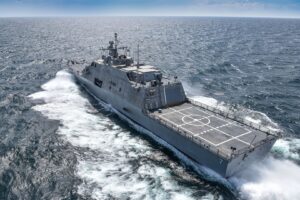
A Navy official on Wednesday said two of the Littoral Combat Ships (LCSs) the Navy proposed divesting of in the latest budget request could be used in reserve or sold to another military. During a Senate Appropriations defense subcommittee hearing, Sen. Richard Shelby (R-Ala.) asked what the services would do with equipment it plans on divesting from, if allowed to, if such equipment might meet other U.S. government or ally requirements. Vice Adm. James Kilby, Deputy Chief Of Naval Operations…

 By
By 











